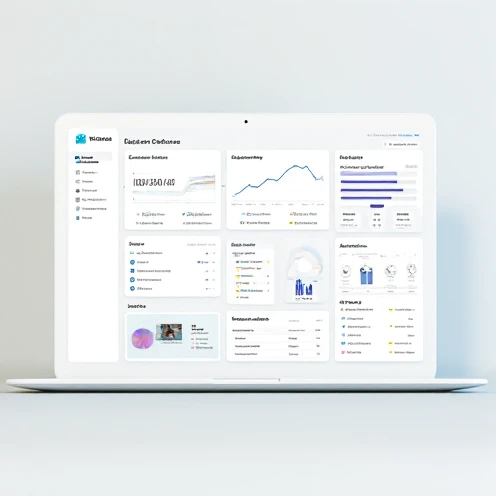In today’s fast-paced digital era, businesses must adapt quickly to meet customer needs. Contact Center Platforms have emerged as a vital solution, bridging the gap between companies and customers. At the same time, Customer Relationship Management (CRM) systems have evolved into powerful tools that help organizations build long-term loyalty.
When CRM and contact center platforms work together, they create a seamless communication hub. This integration not only enhances customer service but also ensures that every interaction adds value to the business relationship. Companies that invest in these technologies gain a competitive edge by delivering personalized, efficient, and proactive support.
Iklan Google AdSense
Understanding the Core of CRM
CRM is more than just software; it is a strategic approach to managing interactions with current and potential customers. By centralizing customer data, CRM enables businesses to anticipate needs, track preferences, and provide tailored experiences.
From sales to after-service, every department benefits from CRM’s ability to align goals and improve collaboration. When linked with contact center platforms, it becomes even more effective because agents have real-time access to customer histories, preferences, and support cases.
The Evolution of Customer Expectations
Customers today demand fast, personalized, and multichannel communication. Whether through phone, chat, email, or social media, they expect consistent experiences. This is where CRM systems and contact center platforms shine.
By using advanced analytics and automation, businesses can respond faster, reduce errors, and provide proactive solutions. This transformation in customer service sets the stage for lasting trust and loyalty.
Key Benefits of CRM Integration with Contact Centers
One of the most significant benefits is the creation of a 360-degree customer view. Agents no longer juggle between multiple tools; instead, they access all relevant information in one place. This leads to shorter resolution times and improved customer satisfaction.
Additionally, CRM integration reduces operational costs by streamlining workflows. Automation handles repetitive tasks, while employees focus on complex issues. This balance improves efficiency and ensures that customers receive the attention they deserve.
Why Businesses Cannot Ignore Contact Center Platforms
Ignoring modern contact center platforms means missing out on valuable opportunities to connect with customers. These platforms allow businesses to centralize communications across multiple channels, reducing confusion and improving response times.
Moreover, they provide detailed analytics that guide decision-making. Managers can identify trends, measure performance, and adjust strategies to meet customer expectations. Without such insights, businesses risk losing ground to competitors.
Building Stronger Customer Relationships with CRM
Trust and loyalty are built over time. With CRM, businesses can strengthen these bonds by remembering preferences, birthdays, or even previous complaints. Personalized follow-ups create a sense of care that generic messages cannot.
The ability to forecast customer needs also helps businesses stay ahead. For example, a CRM can alert an agent when a subscription is about to expire, giving them the chance to renew it proactively. This approach not only drives revenue but also boosts customer retention.
Contact Center Platforms as the Heart of Customer Experience
Contact centers are no longer limited to call handling. They are now the heart of customer experience, offering omnichannel solutions that ensure consistent communication. When paired with CRM, they provide agents with context, history, and suggested actions during live interactions.
This synergy enhances not just problem-solving but also upselling and cross-selling opportunities. Customers feel understood, while businesses maximize revenue potential.
The Role of Data and Analytics in CRM
Data is the backbone of every successful CRM strategy. With the right analytics, businesses can uncover patterns in customer behavior, predict future needs, and optimize marketing efforts.
When combined with contact center platforms, analytics become even more powerful. Companies can track call durations, measure sentiment in conversations, and evaluate the effectiveness of responses. This information shapes better training and resource allocation.
Overcoming Challenges in CRM Adoption
While the benefits are clear, some businesses struggle with CRM adoption. Common challenges include resistance to change, lack of training, and integration complexities. To overcome these issues, companies should invest in proper onboarding, continuous training, and flexible platforms that adapt to evolving needs.
When businesses overcome these barriers, the rewards are immense. Not only do they see improved customer satisfaction, but they also benefit from more engaged employees who feel supported by technology.
Future Trends in CRM and Contact Center Platforms
Looking ahead, artificial intelligence (AI) and machine learning will redefine how businesses interact with customers. Predictive analytics, chatbots, and automated workflows will become standard features of CRM and contact center platforms.
At the same time, personalization will reach new heights. Businesses will be able to anticipate needs before customers even express them, creating experiences that feel intuitive and human. Companies that embrace these trends will lead the market.
Why Your Business Needs CRM and Contact Center Platforms Today
Waiting too long to implement these tools could mean falling behind competitors. Customers are already gravitating toward businesses that offer seamless, omnichannel support. By adopting CRM and contact center platforms now, companies future-proof their customer engagement strategies.
The sooner businesses make this investment, the faster they can build long-lasting relationships, reduce operational costs, and increase profitability. It is not just a trend; it is the future of customer engagement.
Iklan Google AdSense


